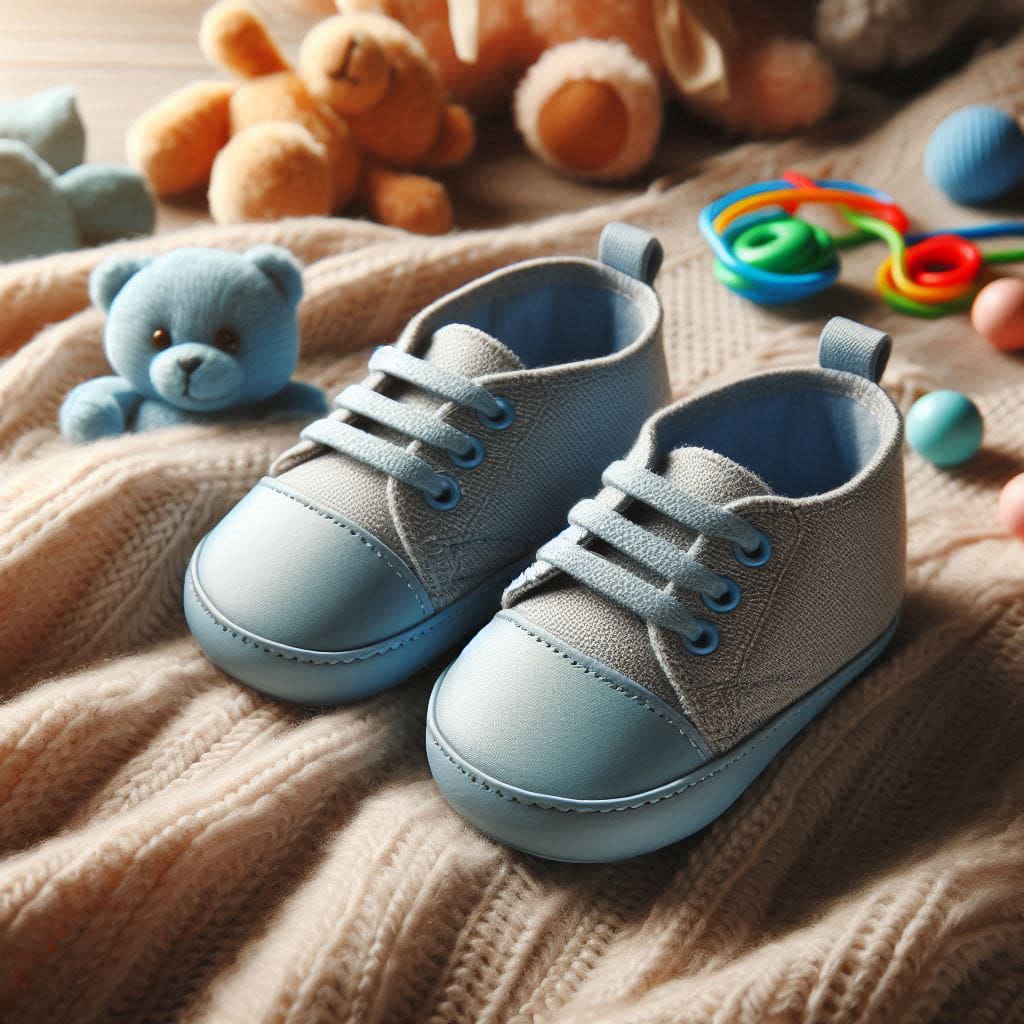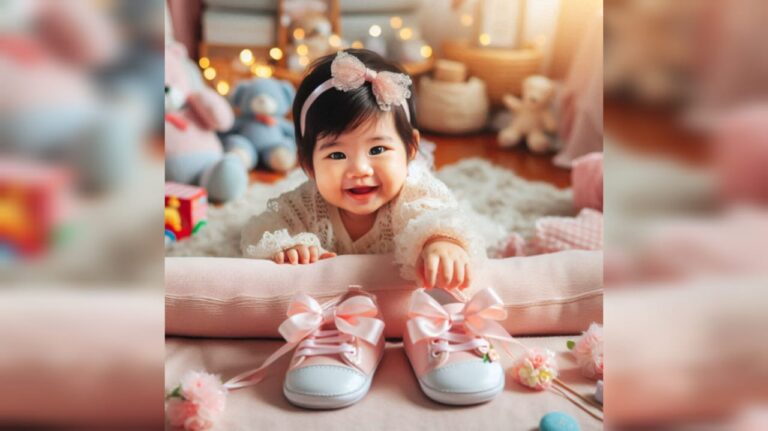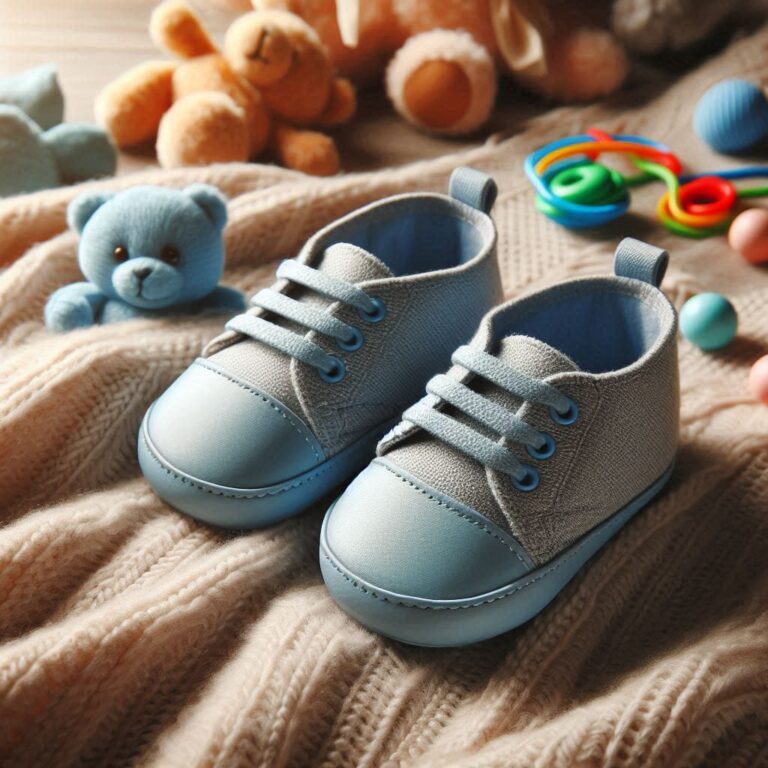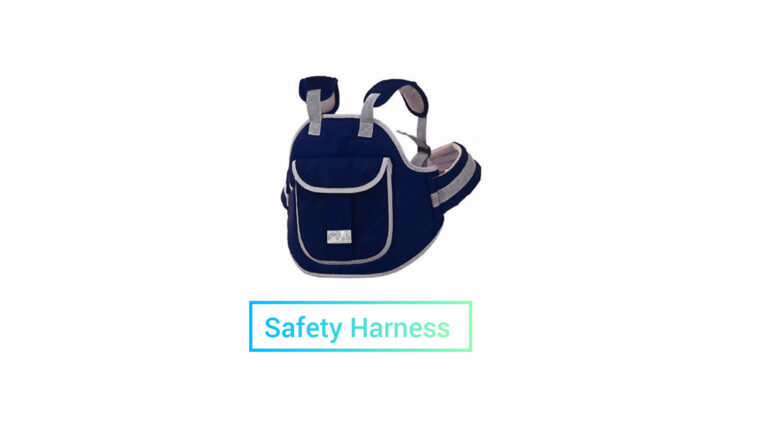Tiny toes, big decisions! Picking out shoes for your baby boy isn’t just about cute designs and matching outfits. The right footwear helps support healthy foot development and makes those first steps safer and more comfortable. In this guide, we’re diving deep into everything you need to know about baby boy shoes-from sizing and materials to expert-backed tips and stylish picks.

How Baby Feet Develop
Baby feet are mostly cartilage in the beginning-soft, flexible, and constantly changing. Unlike adult feet, they’re not fully formed until around age five. So, cramming those squishy feet into rigid shoes too early can actually affect their development.
Types of Baby Boy Shoes
Crib Shoes: Crib shoes are all about style and warmth, not walking. They’re soft, light, and usually made from cozy fabric.
Pre-Walker Shoes: These are designed for babies who are crawling or standing. They’re flexible and help babies feel the ground-super important for learning balance.
First-Walker Shoes: When your baby takes those wobbly first steps, it’s time for first-walkers. Look for shoes with soft soles and great grip.
Toddler Shoes: Once your little guy is confidently walking (or running!), you’ll need more durable shoes that offer solid support.
Key Features to Look for in Baby Boy Shoes
Flexibility and Soft Soles – Shoes should bend with your baby’s foot. A stiff sole can limit movement and cause discomfort.
Breathable Material – Babies sweat a lot-even in their feet! Breathable fabric like mesh or cotton keeps things fresh.
Proper Fit and Support – Too tight? That’s a no-go. Too loose? Blisters incoming. Look for snug yet comfortable fits with enough wiggle room.
Easy Fastening Options – Velcro and elastic are your new best friends. Quick on, quick off-perfect for squirmy little feet.
Baby Shoe Sizing Guide
How to Measure Baby’s Feet
Use a piece of paper and trace your baby’s foot. Measure from heel to toe and compare with a size chart.
Shoe Size Chart for Baby Boys
Sizes vary by brand, but here’s a quick cheat sheet:
- 0-6 months: Size 1-2
- 6-12 months: Size 3-4
- 12-18 months: Size 5
Signs That Shoes Don’t Fit Properly
Red marks, blisters, or your baby pulling the shoes off constantly? Time for a new pair.
Seasonal Shoe Guide
Summer Shoes
Opt for lightweight sandals with breathable mesh or fabric.
Winter Boots
Go for waterproof, insulated options that are still flexible enough for tiny feet.
All-Weather Options
Some sneakers come with weatherproofing-ideal for year-round use.
Stylish Yet Practical Designs
Classic Styles
Think neutral colors, simple shapes, and timeless appeal.
Sporty Looks
Miniature versions of adult sneakers? Yes, please!
Dressy Options for Occasions
For weddings, birthdays, and special events, go with mini loafers or moccasins.
When to Replace Baby Shoes
Growth Spurts and Wear Signs
Check every 2-3 months for growth or damage. Babies grow fast-those tiny sneakers might not last long.
Conclusion
Choosing the right pair of shoes for your baby boy isn’t just about fashion-it’s about function, comfort, and development. With so many styles and options out there, it’s easy to get overwhelmed. But with this guide in hand, you’re now equipped to make smart, stylish, and supportive choices for your little guy’s growing feet. Happy shoe hunting!



